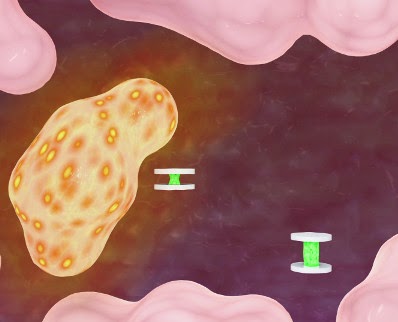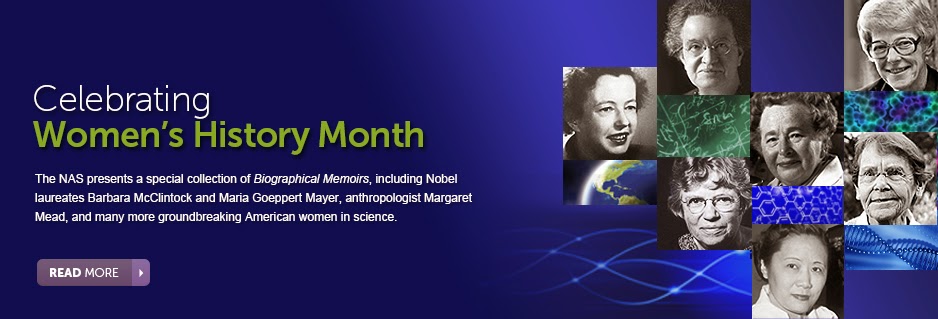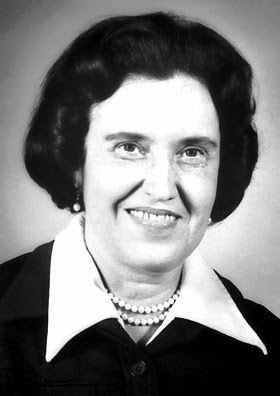A military leader’s unauthorized decision to destroy an alien starship presages a fateful expansion of Humanity into space.Commmander Mfune strode the decks of the great Benai Aethership, his footfalls echoing through corridors once filled with life, now only reverberated with the sounds of his steps alone; his and the specter of Death.
His crew had long since abandoned this edifice, this magnificent creation of an alien mind. The echoes of those minds were too strong, their remnants burned into the very metal itself.
Any who stayed too long soon began to see things from the corner of their eyes. Hear voices speaking to them, fearful voices, terrible voices, voices which spoke of madness and death.
Mfune understood.
He had been onboard the Aethership since its arrival. His ship and his welcome fleet waited nearby, disappointment wafting from them, a redolent wind even in the vacuum of space. Everyone had long waited for these benefactors of Humanity to arrive.
Humanity has waited for nearly three hundred years, two hundred of them spent in relentless combat. With each other.
When the Benai first sent messages to Earth, nearly three hundred years ago, it was a time of great trouble. Food shortages, drought, endless wars over resources were the only legacy of Earth at the time. It was estimated we would never see the end of the twenty first century.
With the air hotter than ever, almost all life in the oceans dead, we were poised for extinction, one last battle away from non-existence — when their message came.
SETI share it. It could be nothing but a message from an alien culture. Spliced together from transmissions from Earth, our simplest radio and television transmissions, they managed to send us a message that was unmistakably alien and still able to be accepted. Encoded within the transmission was information, alien technology which would open our solar system to us: the Aetherdrive.
Nullifying or concentrating gravity as we needed, we took to the planets, for the first time able to escape gravity wells without the need for mass. Only energy was required. The remnants of humanity came together one last time and we flew into our solar system, space between us relieving our tensions, our urge for exploration and technological advancement reignited. Nations staked out moons, other planets, asteroids and for a time, we found peace. A hundred years passed and we were explorers again.
It was not to last.
Mfune tugged his close fitting ceremonial uniform, feeling its age and antiquity upon it. An outfit for a war nearly a century out of date. A uniform worn by his father and his father before him, when expansion ceased, trade began and with trade, came inequalities and with inequality came frustration. And this soon lead to war. Small wars at first, the Aethertech we developed was not like theirs.
The commander looked around at the vastness of their construction and realized just how puny the largest of the human warships was in comparison. His science team had scoured the ship. There were medical technologies beyond our understanding — tools that reacted to mental directives, materials that took on shapes envisioned by the user.
Things that appeared as magic to us. The one thing we did not find were weapons. There were no weapons onboard this moon-like craft. Nothing that could easily harm another.
The supposition was they might not have needed to have active weapons, they created them only when needed. No need to keep an armory when you can envision your gun and have your ship make it on the spot.
Perhaps, but Mfune doubted that. His feel of the ship did not bespeak violence. It bespoke curiosity. It bespoke an urge to know, to learn, to embrace the new. And the voices which cried out in his mind, that leapt from the bulkheads, told him he was right.
So what happened to them? Why was there only this one remaining? Out of fear or perhaps reverence, no one touched the one corpse, this starchild of an alien species. Scans were done, readings taken, tiny organic traces gathered.
All that Human science could accomplish in the twenty third century, a century after we had realized the foolishness of war, had been done. At the end of the Final Human War, it was called, we experienced a renaissance, a new Golden Age.
An age we were hoping to show to the Benai. An age of enlightenment which revealed to us what the Benai already knew; how to take the Aethership to near light speeds. Fast enough to travel to other stars. We wanted to show them we had learned, evolved and could one day, maybe be their equals, with their help.
How could we know, the Benai had continued to monitor us? To watch us grow and develop. Watch us step out into space and explore our planets. To watch us wage countless new wars, more terrible than any before them.
Mfune walked into what was believed to be the command structure of the ship and where the sole occupant of the craft resided. While few could even enter this room without the ghosts overwhelming them, Mfune, a remnant of a warrior age, knew this feeling.
He touched the alien and its memories filled him. Memories of the madness that swept through the Benai as they listened to the transmissions of our wars. The horror they experienced as we senselessly destroyed one another with the tools and technology they had innocently given us.
Tools they had never thought to make war with. Mfune gently cradled the alien body. Deceptively light, its consciousness suffused him, he could see Human madness sweeping through the Benai, like a contagion. They destroyed themselves as each became exposed to the recordings.
They thought they knew the depths of what we could become. They thought they could withstand our cruelty to teach us a better way. The longer they watched, the more of our madness spread to them. In the century left to their arrival, they went mad.
Some dropped dead on the spot. Others fled and threw themselves into airlocks and fled into space. Ever dutiful, their starship cleaned up after them, reintegrating them with the materials of their ship, embodying their very essence within its walls.
This last member of their crew isolated himself in the command area and refuse to interact with the crew, refused to listen to any of the recordings and his was the last message sent to Earth before we lost all communication with them during the Last Great Human War.
“We loved you. And we are undone.”
Mfune volunteered for this mission, for no one could make sense of the message in during the Second Golden Age of Man. He wanted to be the first to understand why such a strange message was sent when the first ones were so hopeful.
He opened the isolation pod and placed the Starchild within. The ship seemed to respond to him now, he had been onboard for so long. With an understanding given to him by his connection to the Benai, he redirected the ship and plotted a course that would take the Aethership into the sun.
The samples collected from the Benai would be isolated and returned to Earth for storage. His priority one message indicated everyone who had entered this ship be kept apart from the population and quarantined until they could be cleared for duty. All information on the Benai would be stored until a coalition of worlds could decide what should be done with it.
One technology from the Benai nearly destroyed Humanity. What would an entire ship full of of their technology, gear we can barely understand, do to us?
As Mfune made his way to his shuttle, he considered the courtmartial he was liable to be subject to as the alien starship vanished into the Aether and plunged into the sun. “Why,” they would shout, “What wealth of knowledge we could have possessed from them?”
Humanity, all of its factions, would give chase, eager to understand all that they could learn. But the Benai ship was superior in every way. No one would be able to catch it or stop it. It’s plunge into the sun was one of the media sensations of the era. Mfune was lauded and castigated, often in the same breath.
As he arrived on his flagship, a response would already be waiting regarding his directives. Outrage from the scientists, now recovered from the alien influence, would be demanding their liberty and their research. His words would stand.
On his trip back to Earth, his courtmartial was scheduled. Unsurprised, he already knew what he would say.
Resplendent in his father’s uniform he stood before the tribunal, defiant. He wore his father’s uniform, closely reminiscent of his own but a reminder, a remnant of a war, no one dared forget — The darkest chapter in Humany history.
“Explain yourself” was the general sentiment in the roaring tribunal chambers. Gone was the decorum he had come to know from previous visits, this was the shouting of factions, of groups who had already considered what could have been learned, what advantages each group had lost. A golden age had drawn to a close.
He responded simply. “The Benai were a simple people. They created complex technologies, to be sure, but they were a people of spirit, powerful of mind, generous to a fault.” His words silenced the room eager to hang him for his perfidy and incalculable loss.
“Recordings of our violence, as they approached the Earth, drove the crew aboard that great ship mad. These were a people who knew little of violence, of lack, of war. From what I was able to learn of them, war was the concept of ours they understood the least.”
“Look at you. In this room which has stood as a bastion for justice for a century, you would now revert to your factions in the face of opportunity over one another. Dominance we had set aside for the overall good of mankind. But you see, I do not believe we have changed at all. I believe what we have done is temporary as it has been in the past.”
“We hunted, we gathered, we squabbled. We created, we learned. We changed. We created agriculture and formed small towns, villages, townships, cities, states, and nations. Each time change took place, war followed us. We learned from war, we learned through war, we changed because of war. And a period of peace followed.”
“The Benai did not learn that way. They were cooperative always. Their shared telepathy made acts against each other an act against themselves. The idea of our violence rendered them unable to continue their very existence. We were a mental infection, our violent nature became a meme they could not withstand.”
Only one voice could speak out now, the leader of the Colonies, an arrogant man whose role was as much a testament to his quest for power as his ability to lead men. “How does this excuse your treasonous act? With such technology we could have surely resolved many of the issues which prevent us from traveling to the stars. Commander, I demand you explain how your historical lesson is relevant.”
Mfune looked up and the spirit of the Benai filled him. An acute awareness of the limitations of unconnected minds. He strove to be clearer. “Humanity is an expansionist species. We grow to fill the container we reside it. When we reach the limits of the container, we do not stop growing. We do not regulate our development, we do not even acknowledge our limit. We exceed them and expect technology to resolve the issue.
Such resolution is never without cost. Inevitably we would likely go to war as we exhaust our solar system. Such pressures would invariably lead us to seek to expand again. Should we acquire their technology, as we did through their largess in the past, I expect we would expand, and as is our nature wage war on each other.”
Tears streaking down his face, he glared at each of the counselors in turn. “With our complete knowledge derived from their ship, we would want to go to their worlds. What would protect them from us?”
The tribunal was silent.
Justice was swift. Mfune left his command and many of his faithful left with him. Together, they founded a coalition with a single purpose. To warn the Benai, that Humanity was coming.
The Starchild revealed what they needed to know. Through Mfune, together the two of them would teach what they needed to learn. It would be decades while Humanity waged what would one day be called the Expansionist Era brought on by the fragments of knowledge learned from the few hours onboard that great starship.
An aging Mfune hoped there would still be time to save the Benai. The Starchild resonated within Mfune’s mind, assured him there would be.
Starchild © Thaddeus Howze 2015, All Rights Reserved.
Painting “Starchild” © Cedric Peyravernay, All Rights Reserved
Thaddeus Howze is a California-based technologist and author who has worked with computer technology since the 1980's doing graphic design, computer science, programming, network administration and IT leadership.
His non-fiction work has appeared in numerous magazines: Black Enterprise, the Good Men Project, Examiner.com, and Astronaut.com. He maintains a diverse collection of non-fiction at his blog, A Matter of Scale. He is a contributor at The Enemy, a nonfiction literary publication out of Los Angeles.
He is now a moderator and contributor to the Scifi.Stackexchange.com with over a thousand articles in a three year period. He is now an author and contributor atScifiideas.com. His science fiction and fantasy has appeared in blogs such as Medium.com, the Magill Review, ScifiIdeas.com, and the Au Courant Press Journal. He has a wide collection of his work on his website, Hub City Blues. His recently published works can be found here. He also maintains a wide collection of his writing and editing work on Medium.com.
His speculative fiction has appeared in numerous anthologies: Awesome Allshorts: Last Days and Lost Ways (Australia, 2014), The Future is Short (2014), Visions of Leaving Earth (2014), Mothership: Tales of Afrofuturism and Beyond (2014), Genesis Science Fiction (2013), Scraps (2012), and Possibilities (2012).
He has written two books: a collection called Hayward’s Reach (2011) and an e-book novella called Broken Glass (2013). In 2015 he will be releasing Visiting Hours and A Millennium of Madness, two collections of short stories.

















